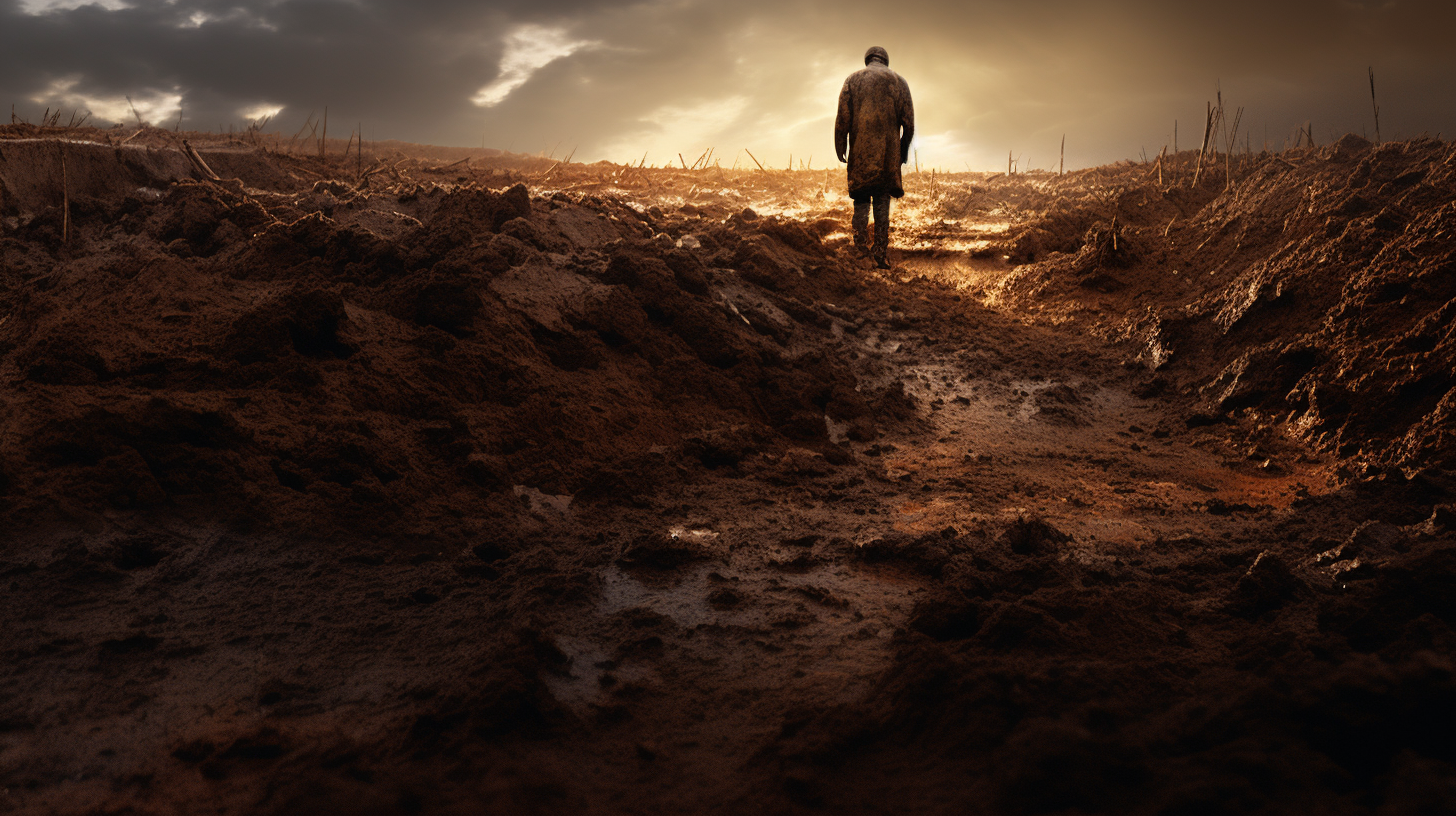In a world not so unlike our own—where glossy skyscrapers once stood as silent sentinels emboldening human progress, there now lies a wasteland of betrayal. ‘The earth beneath our feet,’ a phrase once filled with solidity, now trembles with an ironic echo. Toxic soils spread like a malign shroud over the terrains that once bore bountiful harvests. This is the desolate backdrop of our tale—a tableau ordaining the Residue of Hope where life perseveres in defiance of a poisoned ground.
Forget the idyllic green pastures and flowing streams of innocence past. Here, the rivers run thick with industrial sludge, and the soil itself is a patchwork quilt of chemical contamination. Fields lie barren, save for the hardiest of flora that muster the courage to break through tainted earth—a visible scar of disregard left by generations who believed the wounds inflicted upon the land would somehow self-heal.
Yet, life—stubborn and resilient—forges a narrative of endurance. Amidst the discolored soil, you witness the weathered hands of a farmer, cradling the deformed tubers that found the audacity to sprout. There’s no fate in their eyes, only the gritty resolution to carve existence from the wasteland. ‘It’s about survival,’ they utter. ‘Not just for us, but for all that’s left.’ Amidst toxic terror they bloom—a human spirit unwilling to relinquish its grip to the relentless siege of toxins.
Inhabitants of this world do not tread lightly; they walk on the earth crayoned with invisible boundaries of lethal substances. The unspoken knowledge that any misstep could mean a dance with death is a constant companion. And the very Young—oh, the young! They grow up recognizing the shape of masked faces and hazmat suits before the features of their own kin.
Despite the grim portrait, an odd form of hope does persist. Community gardens rise phoenix-like from the ashes, cautiously laying down roots in heavily curated sanctuaries of safe soil. Remediation efforts—bioremediation, phytoextraction, mycoremediation—serve as whispers of rebellion. Scientists work alongside nature, employing fungi, plants, and microbes as their minute infantry in the colossal battle to reclaim the Earth.
And what of Nature herself? In some truculent corners, green shoots dare to emerge unbidden, evolving against all odds in this hostile new world. They mutiny against the inhospitable conditions, an ever-present defiance in the face of human folly—proving life, in some form or other, will carry on.
As night descends upon this landscape, it is not complete darkness that enfolds the contaminated expanse. Here and there, lights flicker in what remains of habitable zones. Families cluster, sharing stories of a world that was and whispers of a world that could be, should the tides of destruction be stemmed. The Residue of Hope flickers—feeble yet unextinguished.
They say laughter, too, is residue—a haunting echo across the desolation. Children still find occasion for mirth amidst the ruin, their giggles a surreal soundtrack to the backdrop of decay. It is a reminder that even in the most dire of circumstances, humanity finds a way to instill fragments of joy.
But remember, this panorama of endurance is no heroic tale with the promise of redemption. It is a somber ballad sung amidst ruins, a cautionary refrain to echo through time. For those who dwell within the ‘Residue of Hope,’ there is a grim understanding: salvation lies not in the soils of their home, forever marked by human negligence, but in the resilience of those who strive to survive, adapt and, someday, overcome.
The question that tugs at the weary heart—is there more to unravel in this tapestry of survival, or have we witnessed the final act of resilience? The world watches, waits, and wonders.
